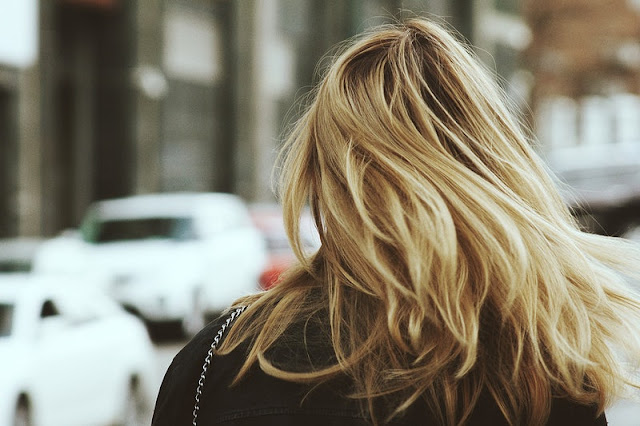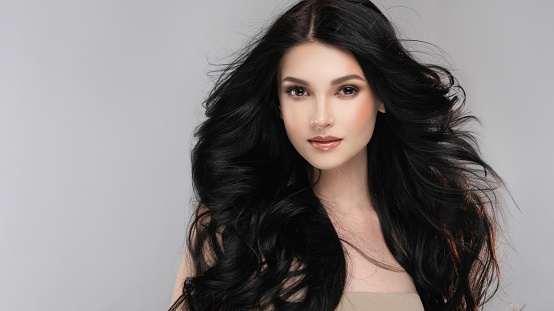Easy Home Remedies For Dandruff
Dandruff affects up to 50% of the people An itchy, flaky scalp is a typical sign of this condition, but it can also cause other symptoms such as oily patches on the scalp. The main causes of dandruff include dry skin, seborrheic dermatitis, sensitivity to hair products and the growth of certain types of fungi living on the scalp. Although there are many over the counter products designed to treat dandruff, natural home remedies can be effective.

Dandruff is caused when Malassezia develops on your scalp. There are two types of dandruff – one occurs due to dryness of the scalp, while the other occurs due to the excessive production of oil in your scalp. Some known causes of dandruff are:
- Rarely shampooing
- Stress and certain illnesses such as Parkinson's disease, eczema and seborrheic dermatitis
- Brushing hair improperly and irregularly
- Improper eating patterns
Dandruff is harmless. But it can be embarrassing and scratchy. Dandruff is really not about your hair, or how often you wash it. Rather, it is about the condition of the skin on your scalp.
Skin cells that grow and die too fast is the problem. Why it happened is not clear. Malassezia fungus is very common contributing to dandruff. This fungus generally lives on the scalp of healthy adults without causing any problems. One theory is that a person's immune system with dandruff may overreact to the fungus.
Dandruff can get worse when you are sick or under stress. The dry, cold winters can trigger dandruff or make it worse as well.
One of the most common causes is seborrheic dermatitis, or seborrhea. Some people with dandruff may also experience seborrheic dermatitis in other areas of the body, such as the ears, center of the face, and the center of the chest.
There are many over-the-counter (OTC) topical medications and specialty shampoos that treat dandruff. However, you can also help get rid of dandruff at home by using the natural remedies below.
Causes of Dandruff
As the layers of skin are constantly replacing themselves, cells are pushed out where they die and slough off. For most people, these skin flakes are too small to be seen. However, certain conditions cause cell turnover to be unusually fast, particularly in the scalp. It is hypothesized that for people with dandruff, skin cells can mature and shed within 2-7 days, compared to about a month in people without dandruff. The result is that dead skin cells are shed in large, oily lumps, which appear as white or grayish flakes on the scalp, skin and clothing.
Dandruff has proven to be the result of three factors:
1. The by-product of skin microorganism metabolism.
2. Skin oil is commonly known as sebum or sebaceous secretion.
3. Individual susceptibility and allergy sensitivities.
Dandruff scales are clusters of corneocytes, which have maintained a great degree of cohesion with each other and detached from the surface of the stratum corneum. Corneocytes are protein complexes made of tiny threads of keratin in an organized matrix. The size and abundance of scales is heterogeneous from one place to another and from time to time. Parakeratosis cells are often a part of dandruff. Their number is related to the severity of clinical manifestations, which seborrhea can also affect.
How Can You Get Rid Of Dandruff Permanently?
Eat YogurtThere are a small number of fungi that live on your scalp and feed on the dead skin. And the good bacteria on our skin control this fungus. Problems occur when the balance of bad and good organisms is disturbed, and the fungus starts to overgrow. Some of the triggers for fungal overgrowth are excessive use of antibiotics, steroids, a stressful lifestyle, unhealthy diet and hormonal imbalance.
Taking probiotics can reduce dandruff. Yogurt contains healthy bacteria and will help get rid of the root cause of dandruff – fungus.
Another way to replenish healthy bacteria is by taking a probiotic supplement.
Baking Soda Baking soda can act as an effective remedy for fighting dandruff. All you need to do is wet your hair and sprinkle baking soda on your scalp, and scrub vigorously.
After exercise, do a quick rinse, but avoid shampooing. Initially, after a few sessions, you may feel that your hair is dry. Eventually, your scalp will begin to produce natural oils, making your hair look softer and without dry flakes.
Don’t Feed The Yeast
If fungus is the cause of your dandruff, then you must pay attention to your diet to correct the imbalance between bad organisms (fungus) and good organisms (bacteria). First, eliminate all foods that feed mold — including fruit juices, alcoholic beverages, soy sauce, and vinegar (and foods that contain vinegar such as tomato sauce, pickles), tempeh, mushrooms, peanuts, and cooked cheese. Avoid flour and powdered sugar for at least two to three weeks.
Essential Fatty AcidsDandruff can occur when your sebaceous glands produce too little oil, leading to a dry, flaky, itchy scalp. Foods that contain essential fatty acids nourish the skin from the inside out and therefore help to combat dryness and also reduce redness and itching.
Eat more oily fish plus flaxseeds, pumpkin seeds, sunflower seeds, sesame seeds, flaxseeds, walnuts or their raw oil. Dan Ghee (clarified butter). Also known as God's Food, ghee will not only get rid of dandruff, it will also make your hair and skin glow.
Ditch Your ShampooThe harsh detergents, preservatives and artificial perfumes in your shampoo can irritate your scalp, causing excessive dryness. Even so-called natural shampoos aren't all that natural – meaning they also contain detergents, which can strip the natural oils and irritate your scalp. It would be nice if you could switch to a homemade shampoo like this or this.
Also avoid washing your hair every day, which can disturb the pH of the scalp. Instead, train your hair not to wash it for two or more days.
Use A Shower Filter
Hard water can exacerbate dandruff. With all the cal and mineral deposits that build up, the flakes and itching won't go away. But you can fight hard water by using an acid hair rinse, which will help remove mineral buildup. As an alternative, you can install a water filter to produce calorie-free water.
Simple Home Remedies to Remove Dandruff
When you are looking to get rid of dandruff, here are some simple home remedies that will help you get rid of dandruff permanently:
Citronella oil
Traditionally, people have used citronella and lemongrass oil to treat digestive problems, reduce stress, and lower blood pressure. Lemongrass oil has antimicrobial and anti-inflammatory properties which can help reduce the symptoms of dandruff.
A hair tonic containing 10 percent citronella oil reduced dandruff by up to 81 percent after two weeks.
Like tea tree oil, lemongrass oil can cause irritation or an allergic reaction if someone applies it directly to the skin. People can dilute citronella oil with water or mix a few drops into their regular shampoo or conditioner.
Coconut Oil with Lemon:
Coconut oil is said to nourish your hair, and when mixed with a little lemon juice, it can treat dandruff. It is also an easy home remedy to get rid of the small splinters that are lowering your self-confidence. .
Preparation of Coconut Oil with Lemon: Follow these simple steps and get rid of dandruff quickly: First, you need to heat 2 tablespoons of coconut oil and mix it evenly with some lemon juice mixture. Once this is done, you can apply this on your scalp and gently massage your hair with it. Once this is done, leave it on for 20 minutes and then rinse with shampoo.
Aloe Vera Gel.Aloe vera is magically calming and will reduce itching and redness instantly. It also has antiseptic, anti-fungal, and anti-inflammatory properties that help accelerate the healing of the skin.
How to use: cut the leaves and apply fresh gel directly on your scalp. And if you use a commercially available gel, make sure it doesn't mix with water or artificial flavors.
Apple Cider VinegarThe acidity of the vinegar works to balance the pH of the scalp and if you have hard water, it will remove cal buildup from your hair. You can use any kind of vinegar, but apple cider vinegar is best for hair.
How to use: Mix one teaspoon of vinegar with two cups of water. You can also add one tablespoon of coconut water to it. After washing your hair, pour this mixture into your hair. Massage your scalp and stroke your hair and leave it on for a few minutes, then rinse it off. The vinegar rinse also enhances shine and makes hair limp.
Don't forget to drink plain water. Water helps to keep your skin and scalp hydrated and moisturized.
Curd: Following home remedies for treating dandruff may be a difficult task to do, especially curd makes it very messy. The curd applied to your hair makes it very effective for treating dandruff.
Curd Preparations for Curing Dandruff:
At first, you need to apply some curd to your hair including your scalp. Let it dry for approximately an hour. Make sure you rinse it within an hour with shampoo.
Tea tree oil.
With its antifungal, anti-inflammatory, and antiseptic properties, tea tree oil can be very helpful in treating dandruff. Many people recommend using this oil neatly, but it's safer to use it with some base oils such as olive or sesame. Mix ten drops of tea tree oil with a tablespoon of the base oil. Massage into your scalp and leave overnight or a few hours
AspirinAspirin is an OTC pain reliever that has the potential to reduce the symptoms of dandruff. Aspirin contains salicylic acid, an active ingredient commonly used in dandruff shampoo.
Salicylic acid can help exfoliate excess dandruff flakes, prevent oil build-up, and reduce inflammation of the scalp.
To use salicylic acid on dandruff, try crushing an uncoated aspirin tablet or two into a fine powder and mixing its strength with a dollop of regular shampoo.
While in the shower, apply the mixture to your hair and leave it for a few minutes before rinsing it off.
Neem Oil.For thousands of years, neem oil has been used to treat skin irritations, eczema, acne and dandruff. Neem oil is effective against several human yeasts including candida, which is one of the main causes of dandruff. It is also rich in essential fatty acids and will work to soften your dry and irritated skin.
How to use: Mix one teaspoon of neem oil with two tablespoons of olive or avocado oil. 3-4 drops of lavender essential oil can also be added. Massage into your scalp and leave it for a few hours. Wash off using natural shampoo or SLS-free shampoo.
And remember natural remedies take time to pay off, but the results last. So hang in there!
Summary
It's time to combat the persistent problem of dandruff with simple home remedies for dandruff and hair that is light on your pocket and scalp; Learn simple and easy home remedies for dandruff. The simple dandruff home remedies above will help you know how to control or get rid of dandruff.









